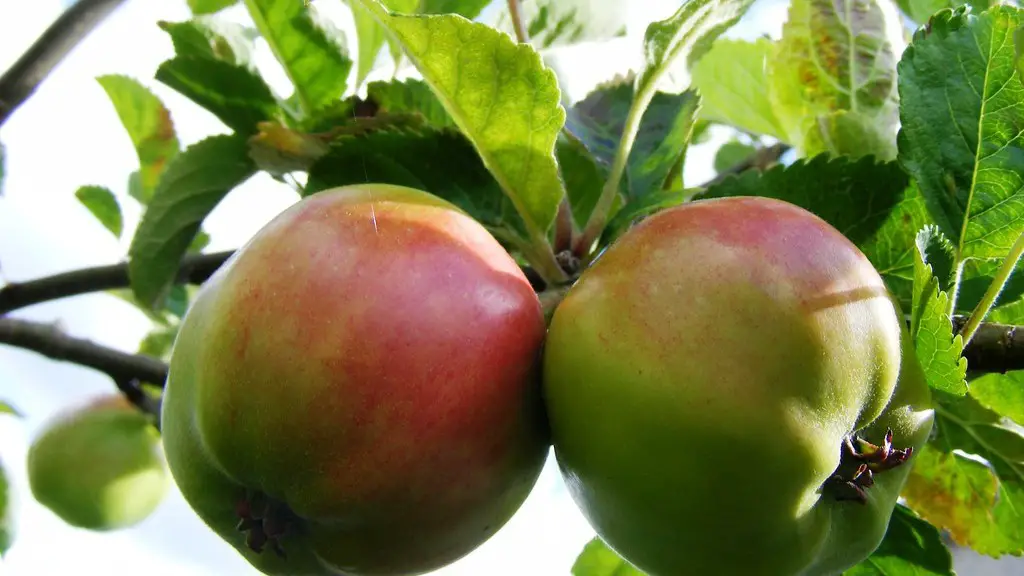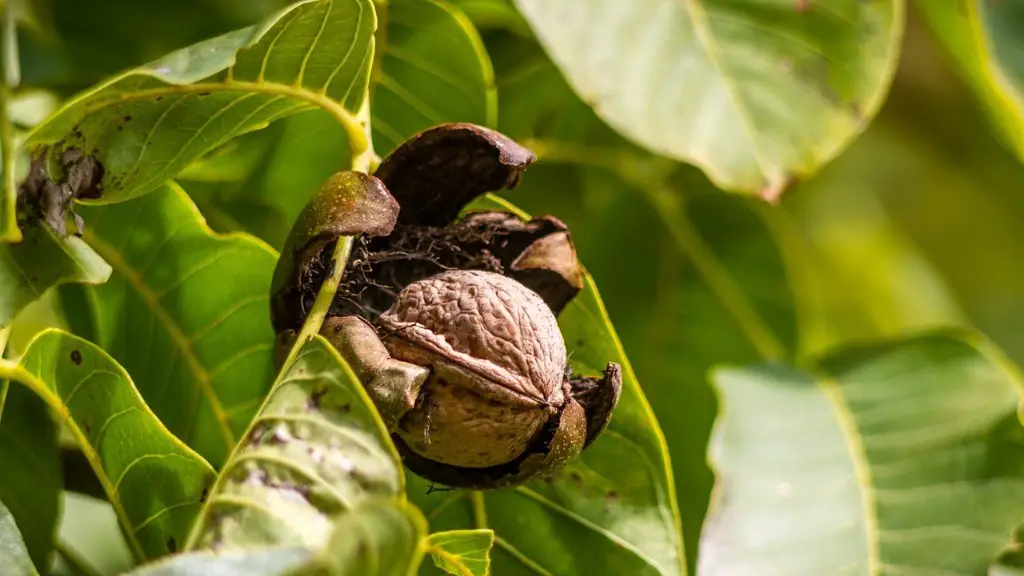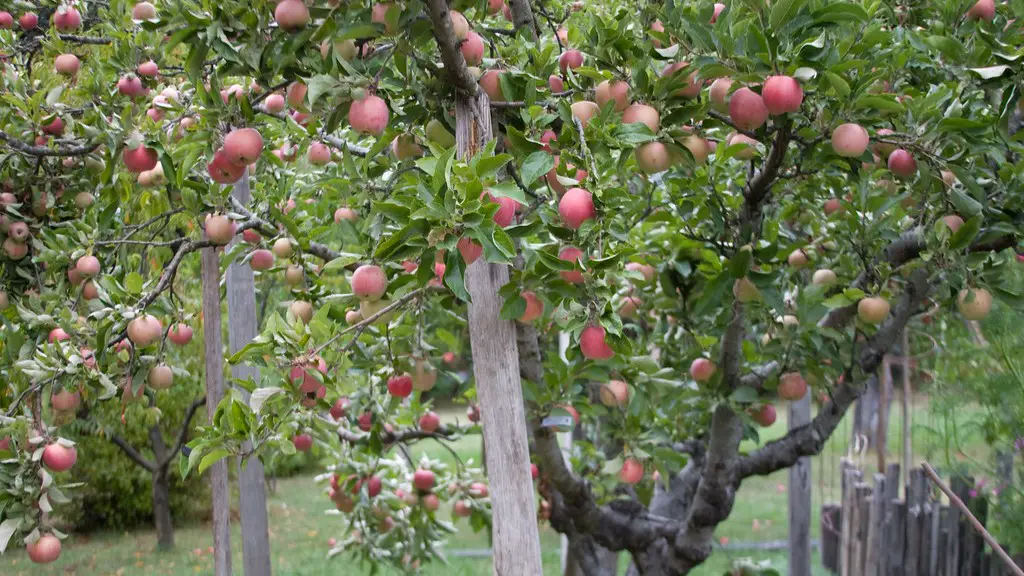The apple tree is a popular fruit tree that is grown in many home gardens. However, sometimes the leaves of the apple tree will be eaten by pests. This can be a problem if the leaves are not replaced quickly enough. There are a few different types of pests that may eat the leaves of an apple tree. These include: aphids, mites, and caterpillars.
The most likely answer is that some kind of insect is eating your apple tree leaves. This could be anything from aphids to caterpillars to beetles. If you’re not sure what’s eating your leaves, you can take a sample to your local Cooperative Extension office or send it to a diagnostic lab.
How do I keep bugs from eating my apple tree?
Here are four tips to keep bugs off any fruit tree:
1. Set up pest barricades. This can be done by planting certain types of plants around the perimeter of the tree.
2. Plant sticky traps for pests. These can be purchased at most garden stores and can be placed around the tree.
3. Spray your fruit trees. This should be done every few weeks with a natural insecticide.
4. Keep the area around the tree clean. This means removing any debris or fallen fruit that could attract pests.
Caterpillars and worms are often the reason your apple tree leaves may have holes and webbing start appearing. These pests can cause serious damage to your tree, and it is important to take action to control them. There are a number of ways to control caterpillars and worms, including using insecticidal sprays, traps, and biological controls. You should also take steps to prevent these pests from infesting your tree in the first place, such as keeping your tree clean and pruned, and using pesticides if necessary.
What can I spray on my apple tree for bugs
Neem oil, insecticidal soaps, and Bt (Bacillus thuringiensis) are all effective against pests that infest trees. Bt is especially effective against leaf-eating pests, such as caterpillars and web worms. When spraying, be sure to target the pests that are present on the tree.
Organic ways to protect fruit trees against pests include using glue bands to catch winter moths, washing trees with a strong stream of water to expose overwintering insects, and preventing ring-barking by rabbits and other rodents. You can also encourage predators of pests, such as ladybugs and lacewings, to help control the population.
Can you spray apple trees with dish soap?
Aphids are small, sap-sucking insects that can cause serious damage to fruit trees. However, they can be easily controlled using simple methods. Easily identified by their small size and large grouping, aphids can come in many different colors. On her homestead, Katie uses a simple water and dish soap spray for her apple tree. It can be applied every 2-3 days for 2 weeks.
The most important period to spray apple trees is from petal drop until just prior to harvest. Several applications will need to be made during this period. The main objective in spraying apple trees is to prevent insect damage to the fruit.
How do I get rid of bugs that eat my leaves?
This is a recipe for an all-natural insecticide. It is safe to use around children and pets, and is effective against a variety of common household pests. To make the insecticide, simply mix 1 tablespoon of mild soap with 1 cup of vegetable oil. Mix well, then add 2 tablespoons of the oil mix to 1 quart of water. Pour into a spray bottle and spray the top and bottom of each leaf where the insects are dwelling, and the stems if needed.
If you have plants that are being bothered by sucking insects, the best thing to do is to treat them with insecticidal soap or horticultural oil. These products will kill the insects without harming the plants.
How can you identify pest by leaf damage
This is an interesting pattern to follow if you see chewed leaves with irregular shaped holes. It is likely that these are slime trails made by creatures that have been chewing on the leaves. This can be a good way to find out what type of creatures are in your area and what kinds of plants they are eating.
Pesticides can be harmful to both your plants and your health. Luckily, there are plenty of ways to deter bugs without resorting to chemicals. Apple cider vinegar is a natural insecticide that can be used to get rid of bugs on plants. There are also several other types of natural plant sprays and homemade bug killers that can be used around the house.
What is a natural spray for apple trees?
You need 6 basic ingredients to make your apple tree spray: canola oil, cinnamon oil, cayenne pepper, garlic powder, dish detergent and water. The one ingredient you may be missing is the cinnamon oil, but this is easy to make at home. Simply combine all of the ingredients in a bowl and mix well. Then, pour the mixture into a spray bottle and use it on your apple tree.
Oil spray is an effective way to control aphids, thrips, mites, and scale. Mix 1 cup of vegetable oil with 1 tablespoon of mild liquid soap and add 2-8 teaspoons of the mixture to 1 quart of water. Spray your plants as above. The oil in the spray smothers the insects.
How often should you spray apple trees for insects
Preventative sprays applied in the spring can help control many issues in apples, but some insect and disease pests require two or more sprays throughout the summer months. Starting at fruit set, these sprays are typically spaced every 10 to 14 days for the remainder of the growing season. By taking this preventive measure, you can help ensure a healthy and bountiful apple crop.
To repel pests, mix half apple cider vinegar and half water in a spray bottle and spray around the perimeter of your home, on the legs of tables that have food served on them, or around a screen house or tent.
Can I use Dawn to make insecticidal soap?
While you can use other kinds of soap to make insecticidal soap at home, it’s not recommended to use dish detergent (like Dawn), laundry detergent, or hand soap (even the “natural” versions), since these soaps contain abrasive ingredients that could harm your plants.
Baking soda is often used as a home remedy for plants. It is thought to be helpful in preventing the bloom of fungal spores, though there is no scientific evidence to support this claim. Some gardeners also swear by using baking soda to control powdery mildew and other foliar diseases. Again, there is no scientific evidence to support this claim. However, baking soda is unlikely to cause harm to plants, so it is worth a try if you are looking for a natural way to control fungal diseases.
Warp Up
There are several possibilities for what could be eating your apple tree leaves. Some common culprits include: caterpillars, aphids, earwigs, and slugs. These pests can all cause extensive damage to your apple tree, so it is important to identify which one is eating your tree leaves and take steps to control the population.
There are many possible culprits for the eaten apple tree leaves. It could be small mammals, such as rabbits or rodents, or even deer. Another possibility is that there is a caterpillar infestation. Inspect the leaves for any sign of caterpillars or other insects. If there are none, then the damage may have been caused by a lawnmower or other Yard tools.





